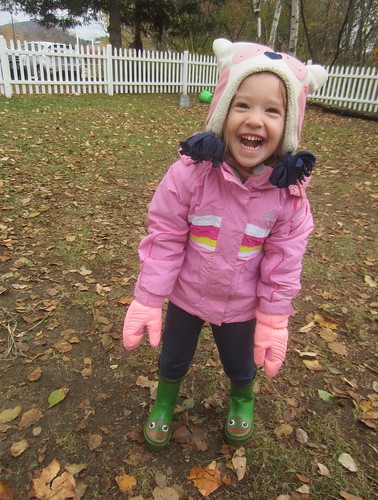 Most of the leaves have fallen to the ground, allowing the sunlight to filter through the branches and warm us on these cold fall days. Raking up leaves to jump in, throw up in the air, and dump in our garden for compost has been keeping us busy and warmed up.
Most of the leaves have fallen to the ground, allowing the sunlight to filter through the branches and warm us on these cold fall days. Raking up leaves to jump in, throw up in the air, and dump in our garden for compost has been keeping us busy and warmed up.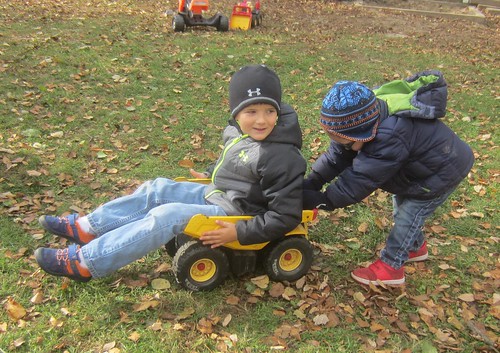
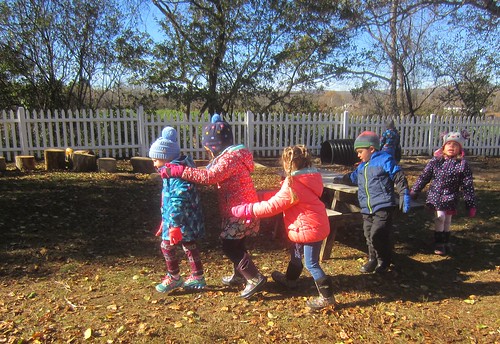
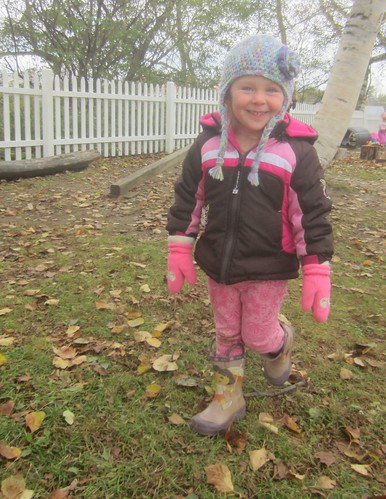
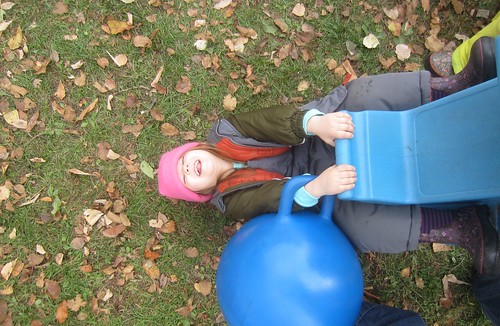

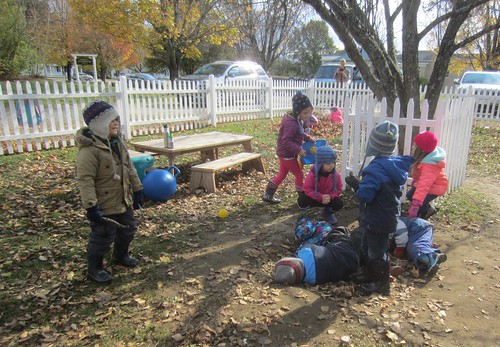
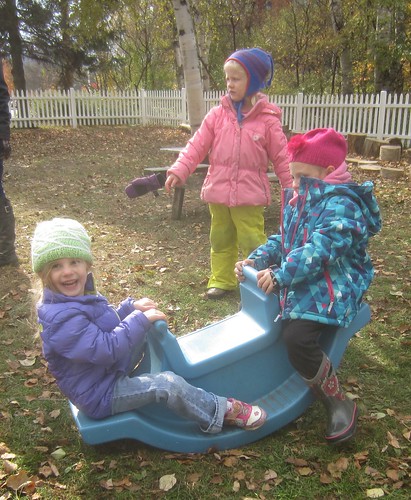
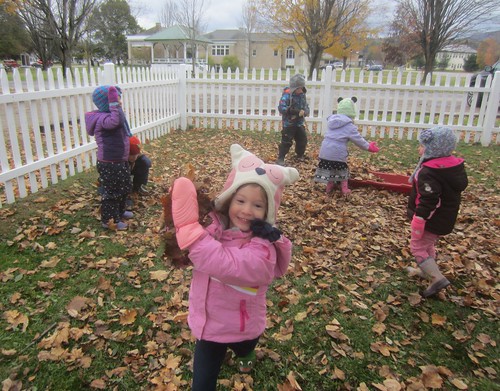
 Monday students learned about the Dutch artist Piet Mondrian, who is most well known for his red, blue, and yellow art, part of the Dutch De Stijl (The Style) movement in the early 1900’s. We looked at his paintings and noticed how his work transitioned from realistic to very abstract, with black lines filled in with white and the primary colors, then to lines of primary colors depicting a city, such as New York. The children used black, blue, yellow, and red markers to make their own Mondrian style art.
Monday students learned about the Dutch artist Piet Mondrian, who is most well known for his red, blue, and yellow art, part of the Dutch De Stijl (The Style) movement in the early 1900’s. We looked at his paintings and noticed how his work transitioned from realistic to very abstract, with black lines filled in with white and the primary colors, then to lines of primary colors depicting a city, such as New York. The children used black, blue, yellow, and red markers to make their own Mondrian style art.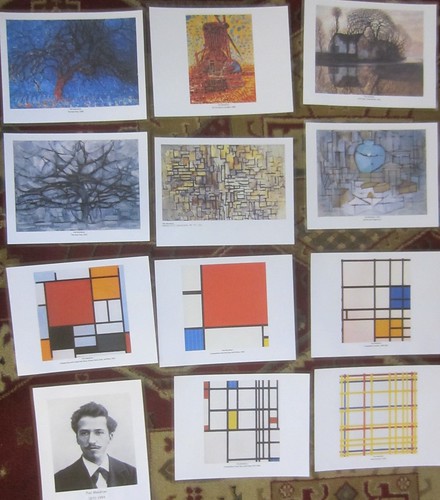
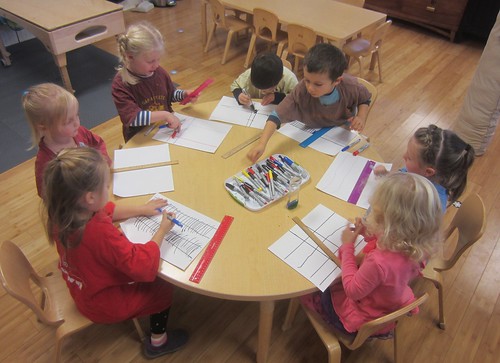

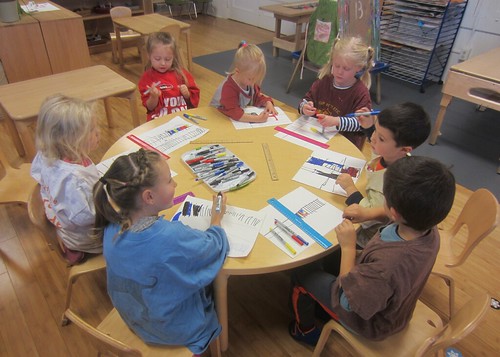
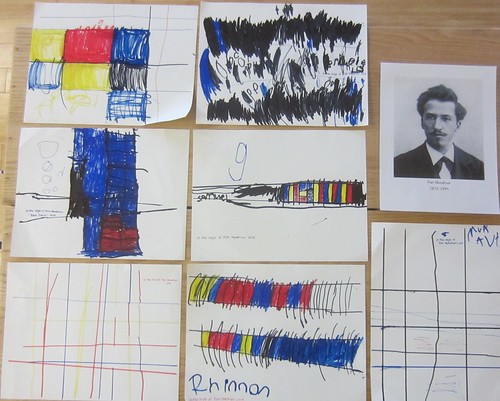 In preparation for Bring Your Family to School Night, the children finished up their family portraits, thought about what items they wanted to show and demonstrate, took a tour of the classroom, and made invitations to take home to families.
In preparation for Bring Your Family to School Night, the children finished up their family portraits, thought about what items they wanted to show and demonstrate, took a tour of the classroom, and made invitations to take home to families.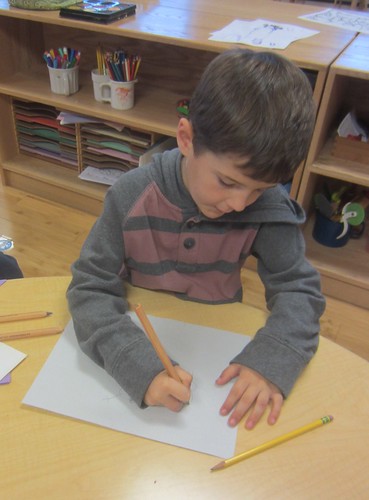
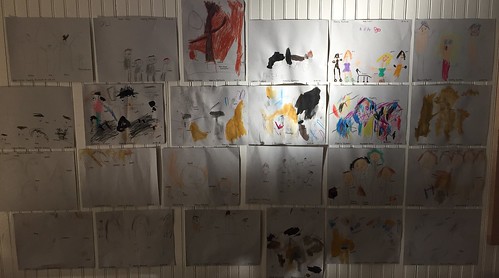 We read Room on the Broom by Julia Donaldson and introduced aspects of a story, including setting, the main and supporting characters, the antagonist and the protagonist, the emotions the characters experience, the conflict/question/challenge, and the resolution.
We read Room on the Broom by Julia Donaldson and introduced aspects of a story, including setting, the main and supporting characters, the antagonist and the protagonist, the emotions the characters experience, the conflict/question/challenge, and the resolution.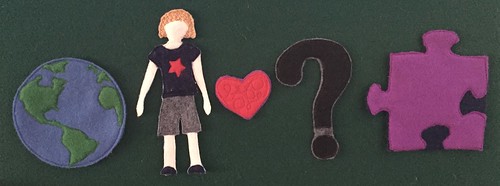
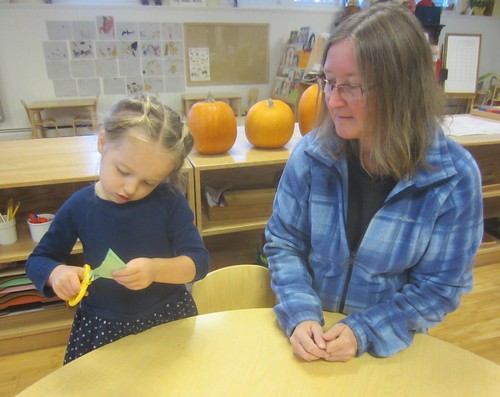
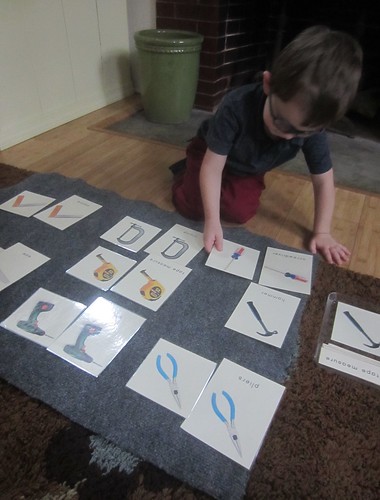
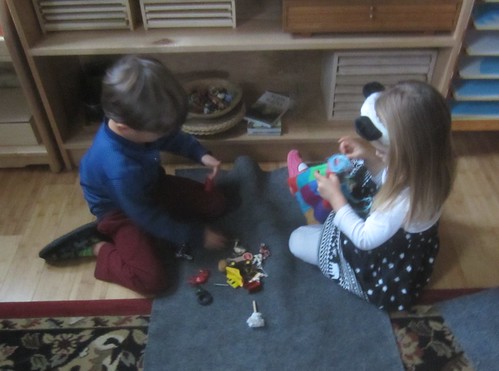
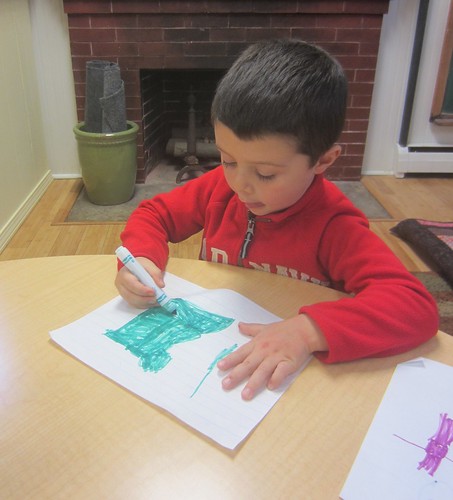
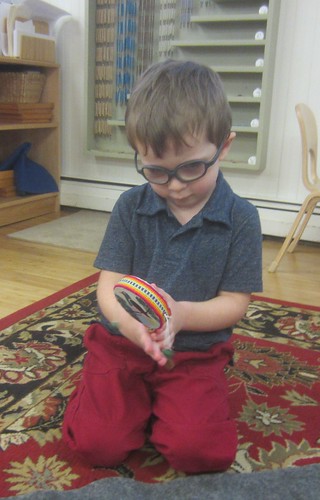
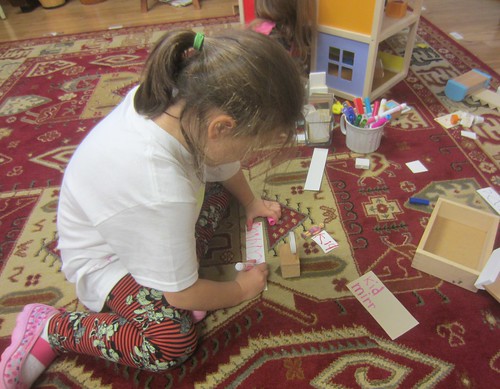
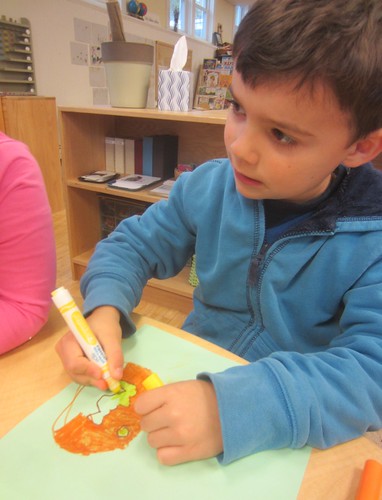


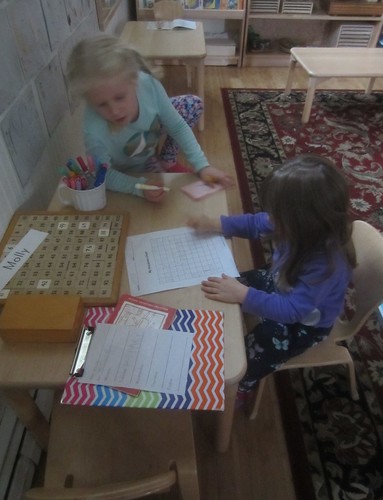
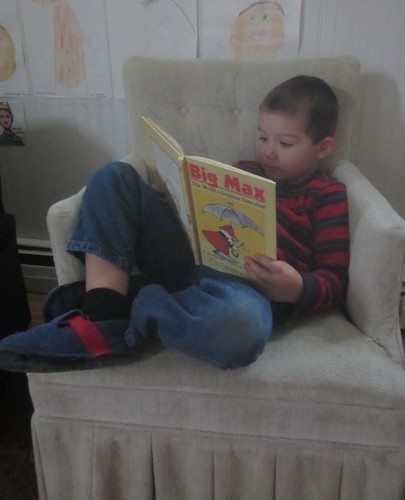
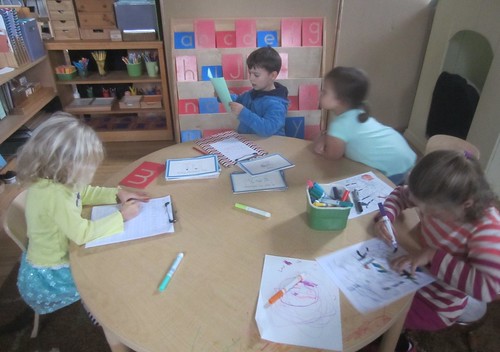
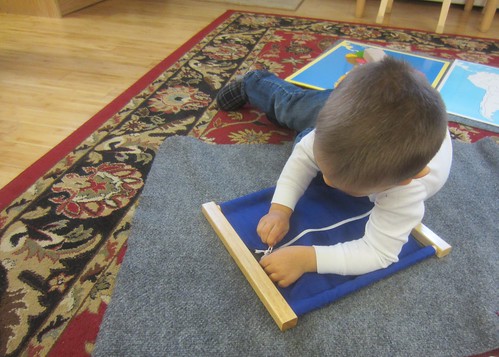

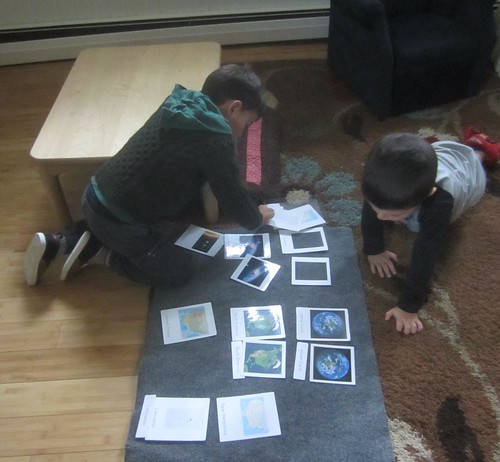
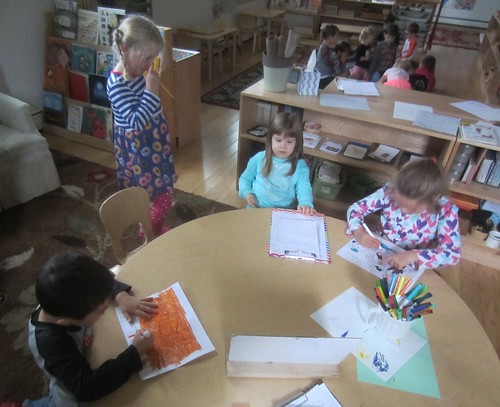
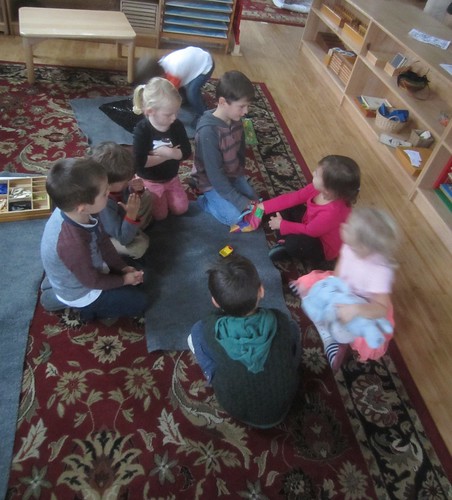
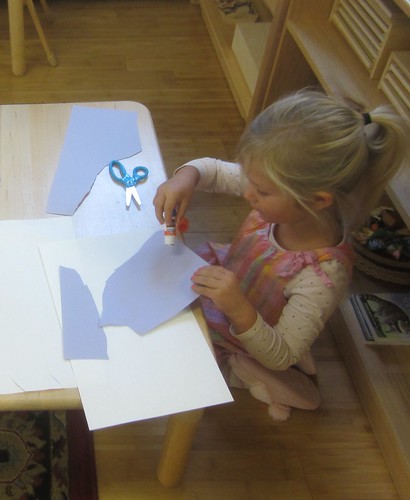

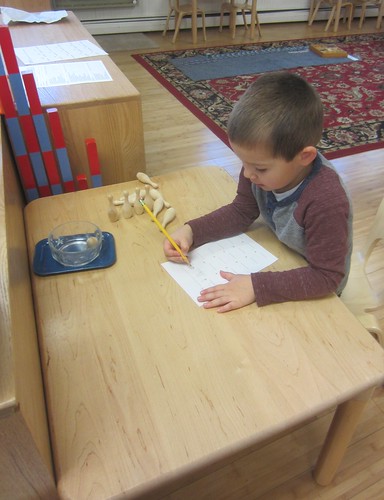
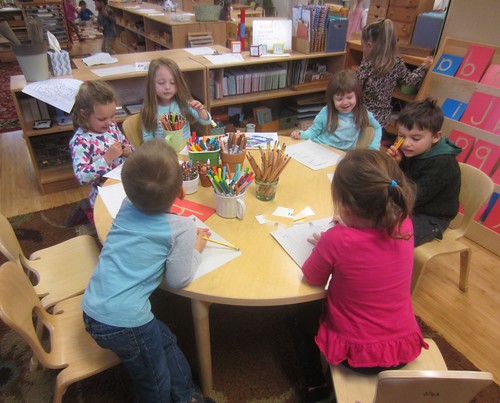
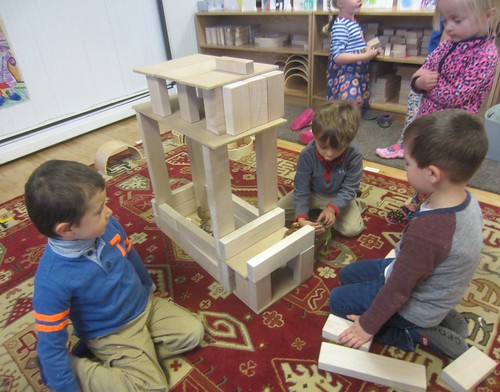
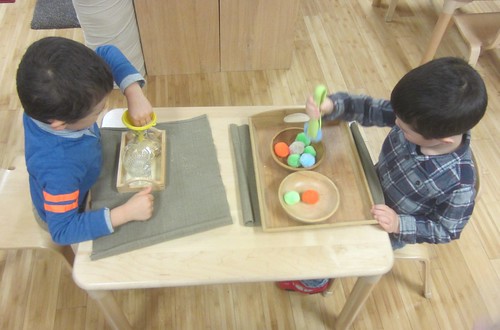
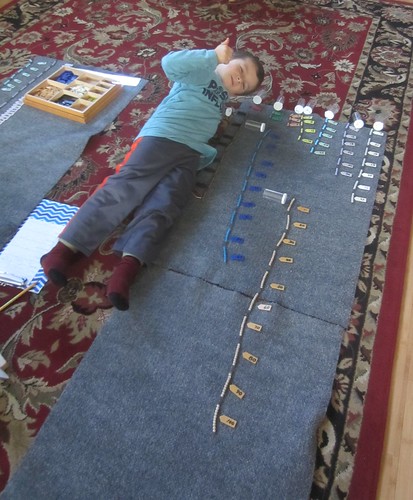
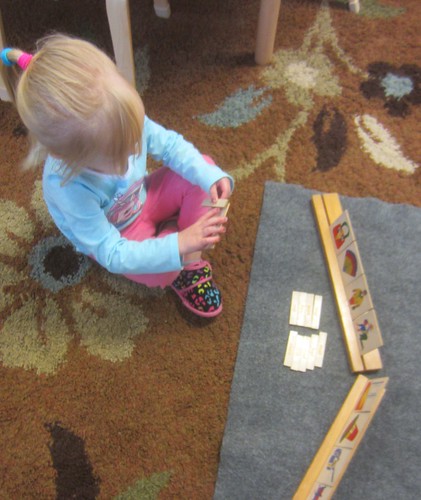

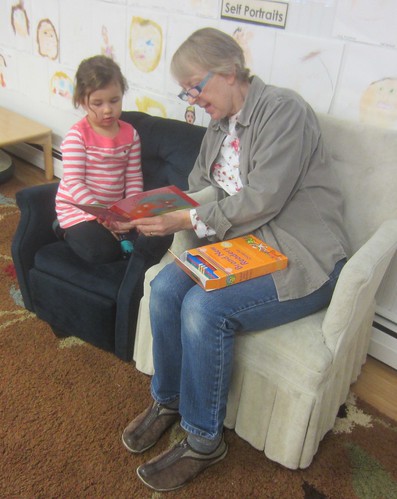 On Wednesday morning we took a field trip to the library to see Miss Ronnie. She showed us the parts of the book – cover, back, pages, and spine. She talked about how we put the books on the shelves with the spines out so we can read the title and author. She gave us a tour around the children’s room and then taught us about fiction (stories that are false – make believe) and non-fiction (stories that are real – contain facts). We learned that non-fiction books have a white sticker at the bottom with a number that helps us know where it goes on the shelf, and that non-fiction books are located along the walls of the children’s room. She showed us where the fiction books are in the middle of the room. She also showed us where the holiday books are located, which have holiday stickers on the spines, and early readers, which have purple stickers on the spines. She also demonstrated how to locate a specific book, then place a space saver in that spot so we know where to return it. The class then split into three groups by age and worked with a teacher to select two books per group to borrow with our library card.
On Wednesday morning we took a field trip to the library to see Miss Ronnie. She showed us the parts of the book – cover, back, pages, and spine. She talked about how we put the books on the shelves with the spines out so we can read the title and author. She gave us a tour around the children’s room and then taught us about fiction (stories that are false – make believe) and non-fiction (stories that are real – contain facts). We learned that non-fiction books have a white sticker at the bottom with a number that helps us know where it goes on the shelf, and that non-fiction books are located along the walls of the children’s room. She showed us where the fiction books are in the middle of the room. She also showed us where the holiday books are located, which have holiday stickers on the spines, and early readers, which have purple stickers on the spines. She also demonstrated how to locate a specific book, then place a space saver in that spot so we know where to return it. The class then split into three groups by age and worked with a teacher to select two books per group to borrow with our library card.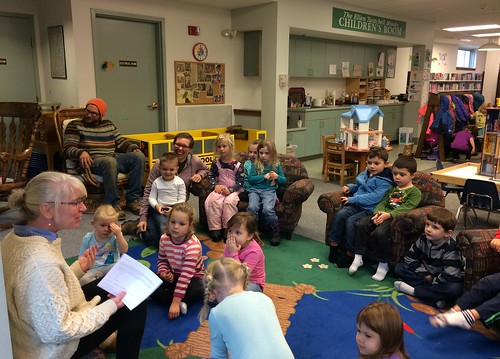
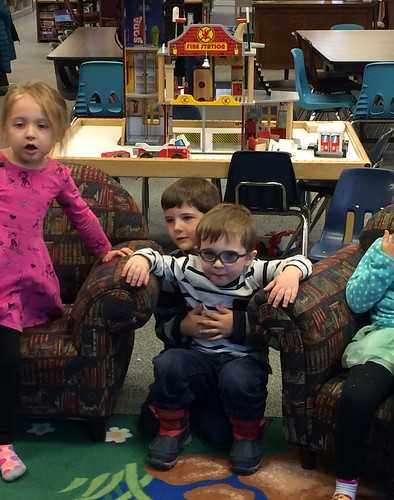
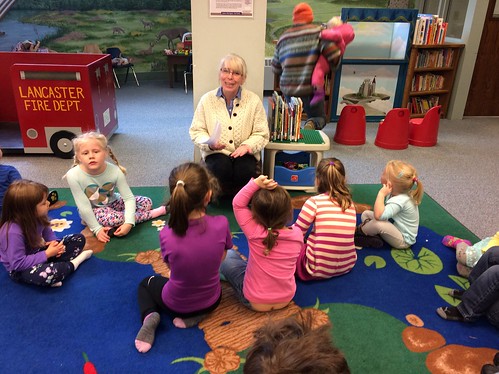
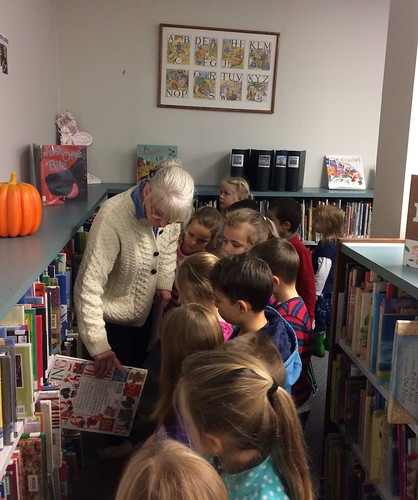 The cartographers continued their map making work with Susan, finishing up their measuring and cutting out pieces for shelves, rugs, tables, etc. in our classroom. They shared their work with the group and children helped to identify the different areas on the map and place the tables in their spots in the classroom.
The cartographers continued their map making work with Susan, finishing up their measuring and cutting out pieces for shelves, rugs, tables, etc. in our classroom. They shared their work with the group and children helped to identify the different areas on the map and place the tables in their spots in the classroom.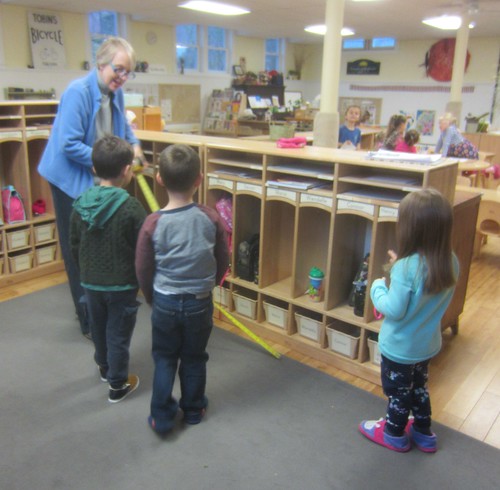
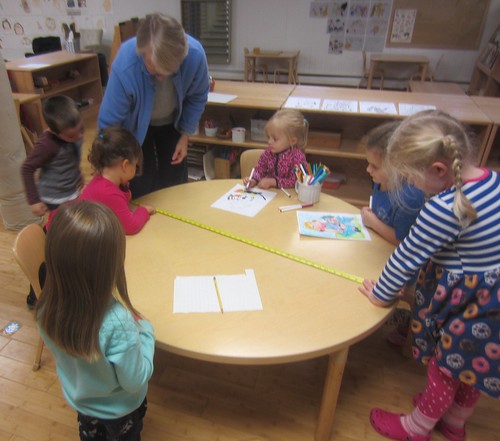
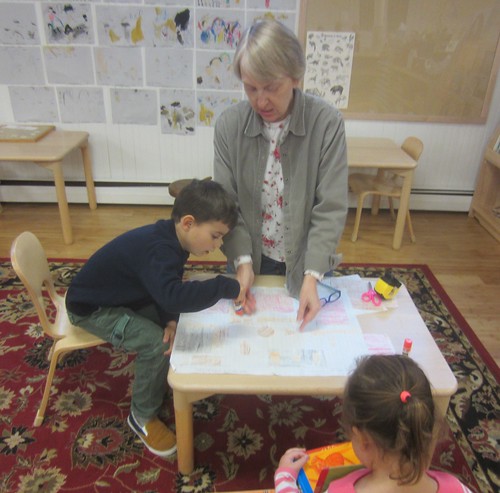

 We celebrated two birthdays this week. Our newest five-year old brought baseball cupcakes to share. He was pleased to walk the earth around the sun while we listed the seasons and counted his five years before blowing out the candle. The soon to be four-year old excitedly passed out her chocolate chip pumpkin muffins, then orbited the candle sun with the globe as we named the seasons and counted her four years before being serenaded with the birthday song and blowing out the candle. Happy Birthday, birthday kids!!
We celebrated two birthdays this week. Our newest five-year old brought baseball cupcakes to share. He was pleased to walk the earth around the sun while we listed the seasons and counted his five years before blowing out the candle. The soon to be four-year old excitedly passed out her chocolate chip pumpkin muffins, then orbited the candle sun with the globe as we named the seasons and counted her four years before being serenaded with the birthday song and blowing out the candle. Happy Birthday, birthday kids!!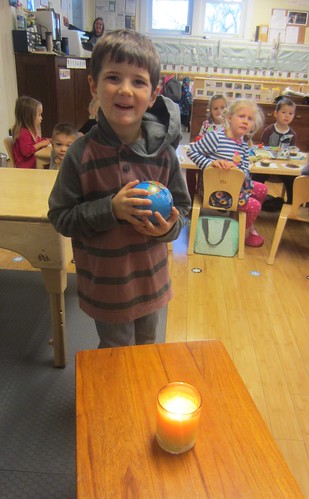

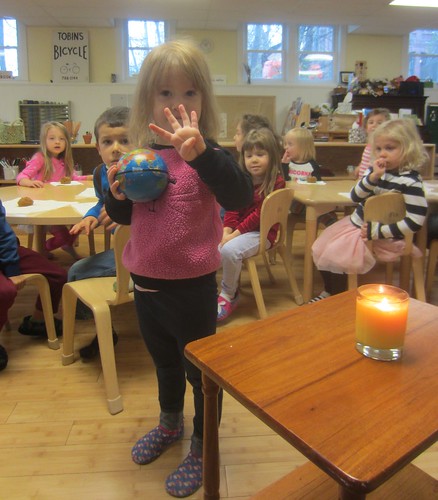
 During Spanish with Zeanny we sang our body songs and counting song. Zeanny read a counting story about Spanish celebrations, called Fiesta! and told us that we will be learning about Spanish holidays over the next six weeks, before we have a big celebration of Las Posadas in December. We then played some Spanish number finding and color finding games before ending our group with the adios song.
During Spanish with Zeanny we sang our body songs and counting song. Zeanny read a counting story about Spanish celebrations, called Fiesta! and told us that we will be learning about Spanish holidays over the next six weeks, before we have a big celebration of Las Posadas in December. We then played some Spanish number finding and color finding games before ending our group with the adios song.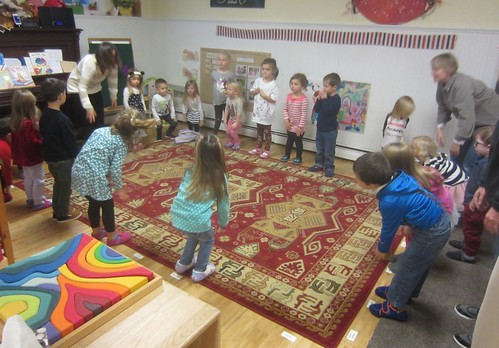
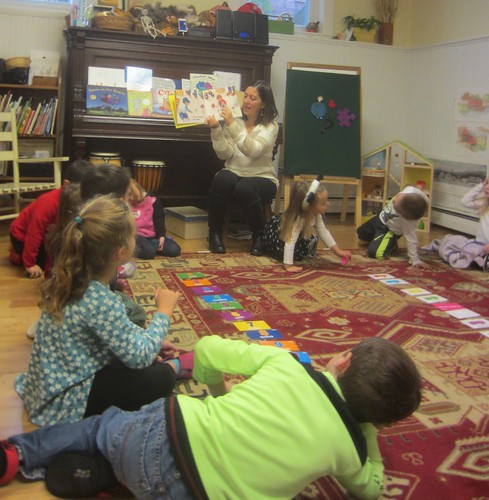
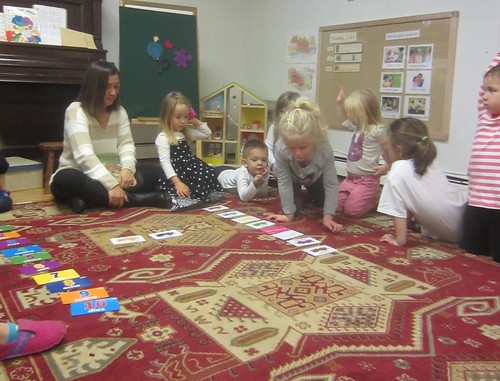 Mr. Bond came for woodworking on Thursday to accommodate our library field trip. He created a shelf to store all the pencil holders the students are making. Each holder has its own space and the children know where theirs are located. This week they used nails and small hammers to attach the first side of their pencil holders, carefully working to hammer the nails in so it is securely attached.
Mr. Bond came for woodworking on Thursday to accommodate our library field trip. He created a shelf to store all the pencil holders the students are making. Each holder has its own space and the children know where theirs are located. This week they used nails and small hammers to attach the first side of their pencil holders, carefully working to hammer the nails in so it is securely attached.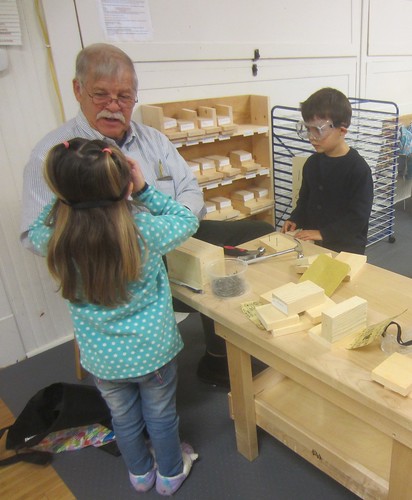
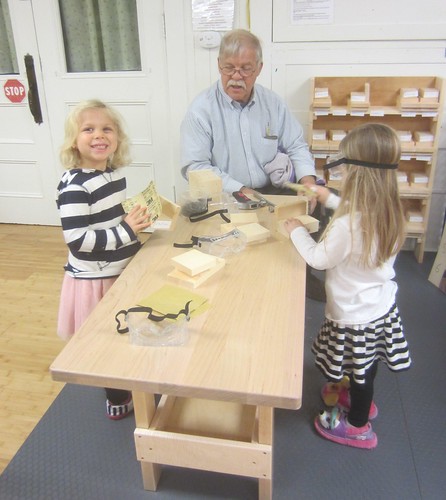
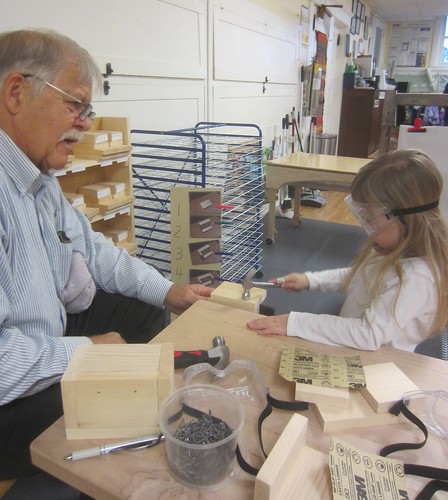
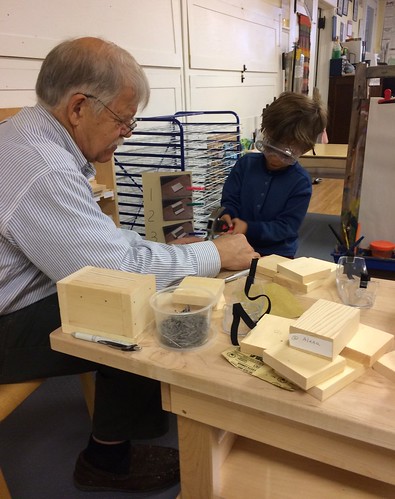
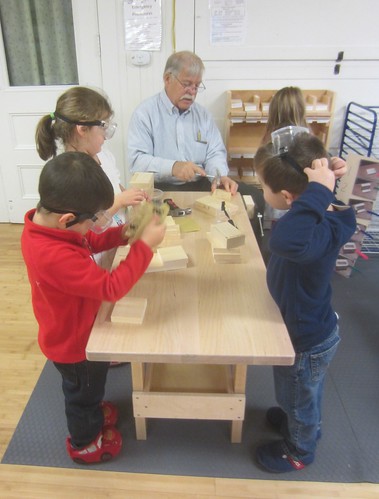 During Music with Susan, she read Musical Max by Robert Krauss and illustrated by Jose Arugo. She then brought out the rhythm instruments. This time everyone had an instrument at the same time and took turns playing them to the Sunnybrook version of “Johnny Hammers with One Hammer.” The children took turns with the different types of instruments; tone blocks, bells, rhythm sticks, and maracas.
During Music with Susan, she read Musical Max by Robert Krauss and illustrated by Jose Arugo. She then brought out the rhythm instruments. This time everyone had an instrument at the same time and took turns playing them to the Sunnybrook version of “Johnny Hammers with One Hammer.” The children took turns with the different types of instruments; tone blocks, bells, rhythm sticks, and maracas.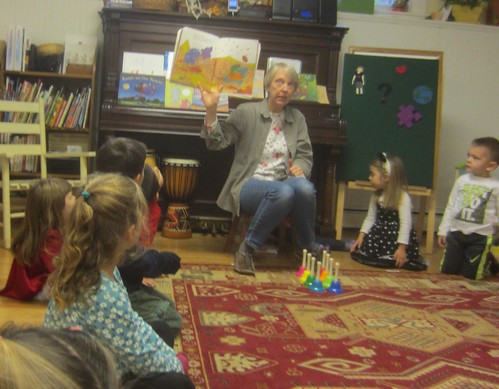
 The hospital was once again busy with doctors and nurses attending to patients while the check in clerks made sure all the paperwork and payments were in order.
The hospital was once again busy with doctors and nurses attending to patients while the check in clerks made sure all the paperwork and payments were in order.

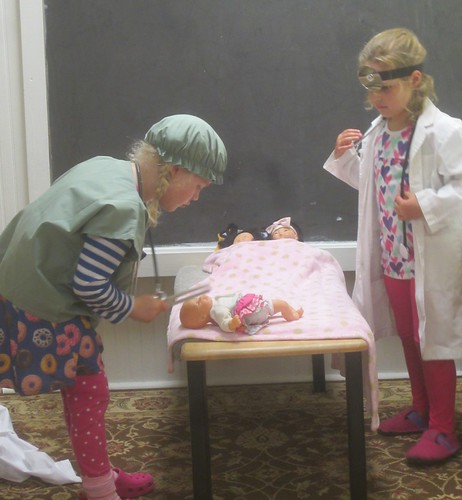
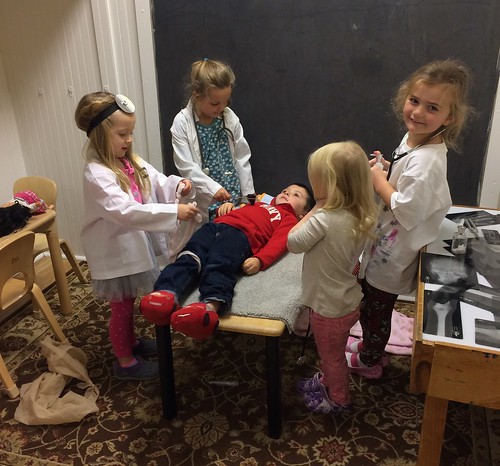

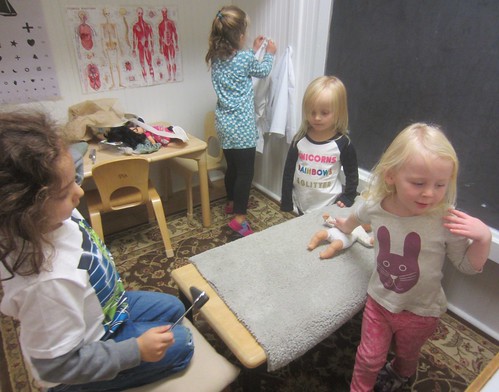 Believe in Books visited with Piglet on Friday morning. Sally read us a story about Piglet. He wants to play with his friends, but they are all busy, so he makes up his own game. His friends then all come play his game with him. The children each got their own story to take home to keep. Non-Friday students will get to choose their stories next week.
Believe in Books visited with Piglet on Friday morning. Sally read us a story about Piglet. He wants to play with his friends, but they are all busy, so he makes up his own game. His friends then all come play his game with him. The children each got their own story to take home to keep. Non-Friday students will get to choose their stories next week.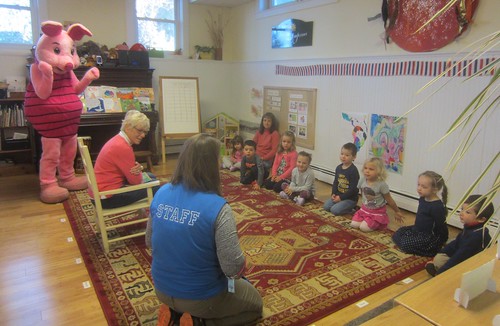
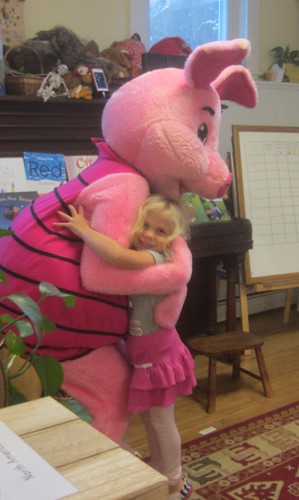
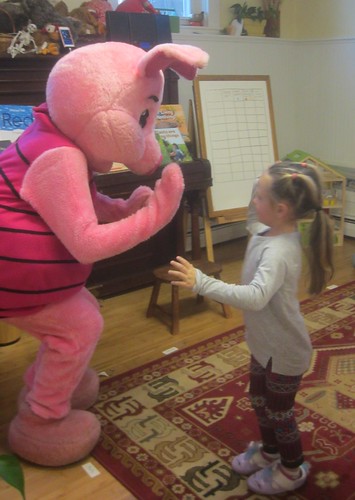
 Friday students continued their study of living and non-living. We reviewed what is living and what is non-living with the book Is It Living or Non-Living? We recalled that plants and animals are living. We know that animals need air, water, and food, and that plants need, air, water, sunlight and nutrients to live. We then read Plants are Living Things and learned more about plants and how they grow and change, their parts, and how they can reproduce. We took down a spider plant and carefully poured it out of its pot to look at the parts. We located the long leaves that produce food in a process called photosynthesis. We looked at the roots, whose jobs are to soak up the water needed to make food, and hold the plant in the ground. We then took five baby spider plant runners to do an experiment. We put one in a jar with air, light, and nutrients (plant food) but no water, a second we placed in an airtight jar with water, light, and nutrients but no air, a third we placed in a jar with air, water, and nutrients, then placed it in a covered pot so it will not get sunlight, a fourth we placed in water with no plant food, and the final was the control with water, nutrients, air, and sunlight. We will observe them weekly and compare them to see how they fare.
Friday students continued their study of living and non-living. We reviewed what is living and what is non-living with the book Is It Living or Non-Living? We recalled that plants and animals are living. We know that animals need air, water, and food, and that plants need, air, water, sunlight and nutrients to live. We then read Plants are Living Things and learned more about plants and how they grow and change, their parts, and how they can reproduce. We took down a spider plant and carefully poured it out of its pot to look at the parts. We located the long leaves that produce food in a process called photosynthesis. We looked at the roots, whose jobs are to soak up the water needed to make food, and hold the plant in the ground. We then took five baby spider plant runners to do an experiment. We put one in a jar with air, light, and nutrients (plant food) but no water, a second we placed in an airtight jar with water, light, and nutrients but no air, a third we placed in a jar with air, water, and nutrients, then placed it in a covered pot so it will not get sunlight, a fourth we placed in water with no plant food, and the final was the control with water, nutrients, air, and sunlight. We will observe them weekly and compare them to see how they fare.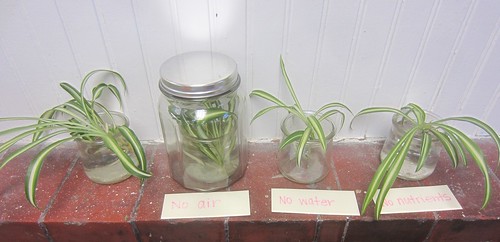
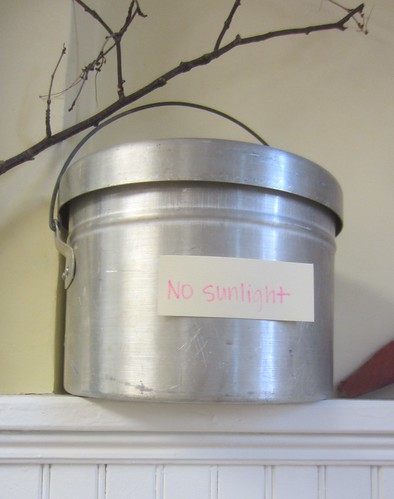
Happiness
October 26, 2018
